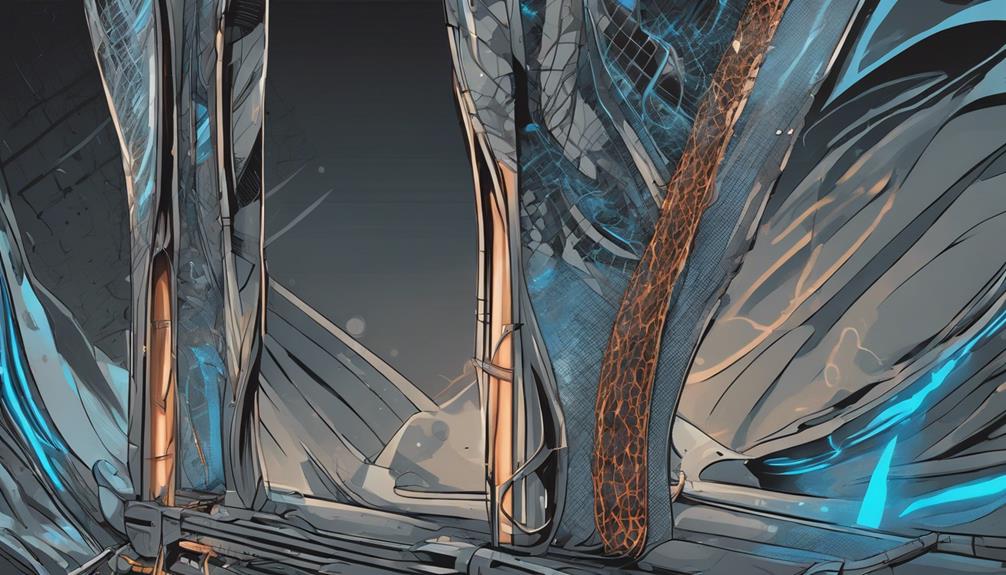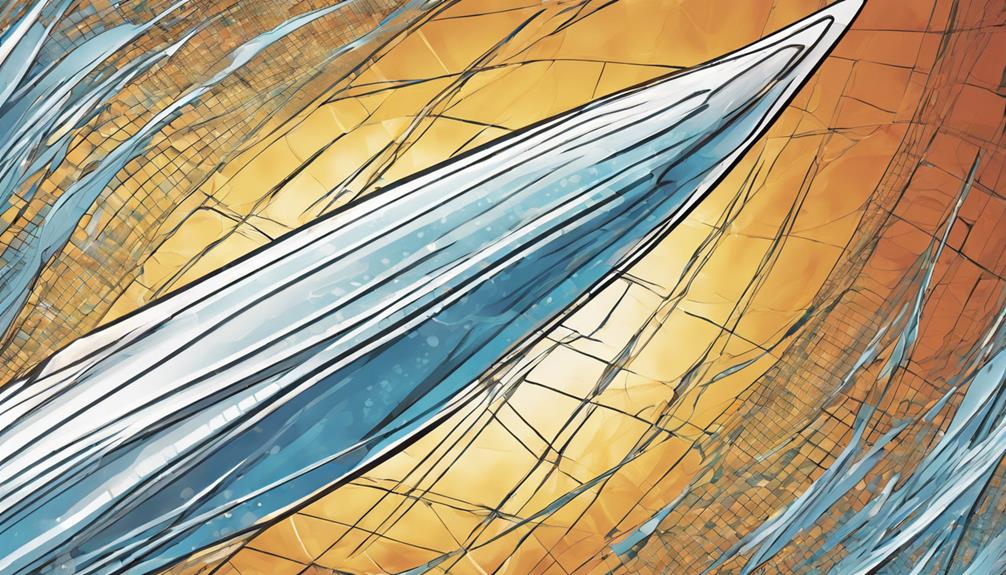You're likely searching for a memorial to honor the engineers who lost their lives on wind turbines. Unfortunately, their stories are often shrouded in tragedy. Take the incident at Delta Winds, where a short circuit caused a fire during maintenance, claiming the lives of Arjun Cordis and Dan Cous. The company's condolences and promises for safety improvements rang hollow, as no criminal responsibility was taken. This avoidable tragedy highlights the industry's need for continuous safety improvements. As you look for a memorial, you'll find that the stories of these engineers serve as a reminder of the risks faced in the renewable energy sector, and the urgent need for change that's still unfolding.
Key Takeaways
- Arjun Cordis and Dan Cous lost their lives in the 2013 Delta Winds tragedy at Utkins Plat wind farm in the Netherlands.
- The incident highlighted the need for improved safety measures and accountability in the wind turbine industry.
- Outdated turbine models like Vesta V66 pose significant risks to engineers, emphasizing the need for modernization and updates.
- The tragedy led to industry-wide efforts to overhaul turbine safety standards, enhance training, and improve emergency response planning.
- Remembering the sacrifices of engineers like Arjun and Dan pushes for innovation and stricter safety measures in the renewable energy sector.
Tragic Incident at Delta Winds
On a fateful day in October 2013, you're thrust into the midst of a tragedy unfolding at the Utkins Plat wind farm in the Netherlands, where a routine maintenance operation turned into a catastrophic event. You're standing amidst the towering wind turbines, watching in horror as a maintenance operation goes awry. Two engineers, Arjun Cordis and Dan Cous, are involved in the incident, their lives hanging in the balance.
As you try to process what's happening, you realize that the fire engulfing the turbine was triggered by a short circuit. It's a stark reminder of the high maintenance costs and lack of proper training in the wind turbine industry. You can't help but wonder if this tragedy could have been prevented with better safety protocols in place.
The incident highlights the need for continuous safety improvements in the renewable energy sector. Outdated wind turbine models, like the Vesta V66 involved in the incident, pose significant risks to engineers and technicians. You're left with a sense of urgency, knowing that the industry must prioritize safety to prevent such tragedies from occurring again in the future.
Company Response and Accountability

As you examine the company's response to the tragic incident at Delta Winds, you'll notice that Delta Wind's condolences to the families of Arjun and Dan seem hollow considering they weren't held criminally responsible for the accident.
You'll likely wonder why the company didn't take more substantial measures to prevent such incidents in the future.
Now, let's take a closer look at Delta Wind's response, the lack of accountability, and the inadequate safety measures that followed.
Delta Wind's Response
Following the devastating incident, Delta Wind's response was put under scrutiny, with many questioning whether the company's condolences for the loss of engineers Arjun Cordis and Dan Cous were genuine or merely a PR stunt. You might be wondering what they'd to say about the tragedy.
In a statement, Delta Wind expressed their deepest sympathies to the families of the two engineers who lost their lives on the wind turbine at the Old Kinch Plat wind farm. They acknowledged that the incident was a wake-up call for the entire wind energy sector, emphasizing the need for improved safety measures to prevent such tragedies in the future.
While their words seemed sincere, many couldn't help but think that the company was trying to divert attention from their potential role in the incident. As you reflect on the lives lost, you're probably curious about what measures Delta Wind is taking to guarantee their wind turbines are safe for maintenance personnel.
Lack of Accountability
You're left wondering why Delta Wind wasn't held criminally responsible for the tragic incident that took the lives of Arjun Cordis and Dan Cous. Despite the devastating loss, the company did not face legal repercussions for the tragedy. This lack of accountability prompted a Dutch political inquiry in 2014, but significant changes were not immediately implemented.
| Incident | Company Response | Accountability |
|---|---|---|
| Delta Wind incident | Expressed condolences | No criminal charges |
| Tragic loss of lives | No legal repercussions | No regulatory changes |
| Raising industry concerns | Questioning industry accountability | Highlighting challenges in attributing accountability |
| Impact on industry | Failing to implement change | Delaying necessary reforms |
The absence of criminal charges against the company highlights the challenges in attributing accountability in such tragic incidents. As you reflect on the incident, you're left with more questions than answers. Why didn't the company face legal consequences? What changes should have been made to prevent such incidents in the future? The lack of accountability raises concerns about the industry's commitment to safety and responsibility.
Inadequate Safety Measures
The company's inadequate response to the tragedy, limited to expressing condolences without taking concrete steps to improve safety protocols, raises serious questions about its commitment to protecting its employees. You can't help but wonder if they're more concerned with avoiding liability than with ensuring workers' safety. The lack of accountability is staggering.
Here are three key takeaways that highlight the company's failures:
- No criminal responsibility: Despite the tragic loss of two lives, the company wasn't held criminally responsible for the incident.
- Inadequate measures: The Dutch political inquiry in 2014 failed to result in significant changes to safety regulations or accountability.
- Delayed action: It took five years for the incident to prompt a reexamination of safety requirements, underscoring the need for improved safety measures in the industry.
The fact that it took a tragedy for the company to reexamine its safety protocols is a stark reminder of the gaps in safety enforcement in the renewable energy sector. You can't help but feel that if the company had taken concrete steps to improve safety measures earlier, this tragedy might've been averted.
Impact on Industry Safety Standards

As you examine the impact of these tragic incidents on industry safety standards, you'll notice a significant shift towards a turbine safety overhaul.
You'll see how the heightened risk awareness has sparked a call for regulatory reforms, and you'll realize that these changes are long overdue in the wind energy sector.
Turbine Safety Overhaul
Following the Delta Winds wind farm tragedy, industry leaders scrambled to overhaul turbine safety standards, recognizing that lax regulations had put workers' lives at risk for far too long. You, as a member of the industry, know that this incident was a wake-up call, highlighting the need for drastic changes to prevent similar accidents in the future.
The overhaul aims to address critical safety concerns, including:
- Outdated turbine models: Replacing old models with newer, safer ones to reduce the risk of accidents.
- Enhanced training and safety protocols: Ensuring that personnel working on wind turbines receive thorough training to handle emergency situations.
- Stringent safety measures: Implementing stringent safety standards to mitigate the dangers associated with working at heights in the renewable energy sector.
Heightened Risk Awareness
You're now keenly aware that the engineers' tragic fate on those Netherlands wind turbines has forever changed the industry's safety landscape. The incident served as a wake-up call, emphasizing the need for heightened risk awareness when working on wind turbines, especially older models requiring maintenance.
You realize that the significance of regular maintenance and inspection can't be overstated – it's essential to prevent similar accidents. The industry is now more vigilant, recognizing that safety protocols need to be updated and proper training provided for personnel in the renewable energy sector.
As a result, emergency response planning and safety measures for workers at heights are being revamped. You see that the industry is taking concrete steps to make sure that workers are better equipped to handle the risks associated with wind turbine maintenance.
The engineers' deaths haven't been in vain; their legacy is a safer, more responsible industry. You're part of an industry that's committed to learning from its mistakes and making amends. The memory of those engineers will continue to drive positive change, and you're proud to be a part of it.
Regulatory Reforms Needed
One significant lesson learned from the Delta Winds wind farm tragedy is that regulatory reforms are urgently needed to revamp industry safety standards and guarantee that such devastating incidents never occur again.
You can't help but wonder how many lives could've been saved if stricter regulations were in place. The incident has prompted a reevaluation of basic safety requirements for wind turbines, highlighting the importance of regular maintenance and modernization.
To ensure a safer working environment, you need to see significant changes in the industry's safety protocols. Here are three key areas that require improvement:
- Stricter enforcement mechanisms: The lack of substantial changes post-incident highlights the need for more robust enforcement mechanisms to guarantee adherence to safety standards.
- Regular maintenance and modernization: The tragedy has shown that regular maintenance and modernization of wind turbines are essential in preventing similar incidents in the future.
- Continuous improvement in safety protocols: The industry must commit to continuous enhancement in safety protocols to prevent tragedies like the Old Kinch Plat wind turbine disaster from happening again.
It's time for the industry to take concrete steps towards reforming safety standards to safeguard engineers working on wind turbines.
Challenges of Rescue Operations

When authorities responded to the emergency, they were met with a challenging scenario: intense flames engulfing the turbine and a precarious height that hindered rescue efforts. You can only imagine the sense of urgency and complexity they faced.
To tackle the situation, a large crane was brought in to assist in the rescue efforts. Time was of the essence, and every minute counted. Despite the efforts, one engineer jumped off the turbine, while the other remained trapped, highlighting the difficulties faced by the rescue teams.
The rescue operation was a race against time, and the outcome was far from certain. The challenges they encountered underscored the need for improved emergency response protocols and training for handling such high-risk situations.
As you reflect on this tragedy, you're reminded of the importance of being prepared for the unexpected. The rescue operation's complexities and time constraints will serve as a valuable lesson for future emergency responders.
Lessons Learned From the Tragedy

The devastating incident on October 29, 2013, drove home the significance of revisiting and refining safety protocols in the wind turbine industry.
You, as an engineer or technician, now grasp the gravity of ensuring that safety standards are up to par.
The tragedy highlighted several key areas that require attention.
Three pivotal lessons learned from the tragedy:
- Outdated models are a liability: The Vesta V66 model, in particular, was shown to be prone to fatal accidents. It's crucial to prioritize maintenance and replacement of such models to avoid similar incidents.
- Safety protocols need continuous improvement: The incident prompted a reevaluation of basic safety requirements for wind turbines, emphasizing the need for ongoing refinement of safety standards and protocols.
- Proper training is indispensable: The events of October 29, 2013, underscored the importance of providing adequate training for personnel working on wind turbines, especially when working at heights.
Preventing Future Incidents

You can greatly reduce the risk of future incidents by updating and replacing outdated turbine models, implementing basic safety requirements, and providing adequate training for personnel. It's important to learn from past tragedies, like the Old Kinch Plat wind turbine disaster, and apply those lessons to improve safety standards. By doing so, you can prevent similar incidents from occurring in the future.
Continuous reassessment of safety protocols is vital in the renewable energy sector. This ensures that safety measures are always up-to-date and effective.
You should also prioritize providing personnel with extensive training on maintenance and emergency response procedures. This will enable them to handle situations confidently and efficiently.
Honoring the Sacrifices of Engineers

Often, we pause to reflect on the ultimate sacrifices made by brave engineers like Arjun Cordis and Dan Cous, who lost their lives in the line of duty, serving as a poignant reminder of the risks and dangers inherent in the renewable energy sector.
As you remember their bravery, you're likely wondering how we can honor their sacrifices.
Here are three ways to do so:
- Advocate for improved safety protocols: By pushing for stricter safety measures, you can help guarantee that similar incidents don't occur in the future.
- Support the development of new turbine technology: Outdated technology, like the Vesta V66, poses significant risks to engineers. By endorsing innovation, you can contribute to a safer working environment.
- Share their stories: By sharing the stories of Arjun and Dan, you can raise awareness about the risks faced by engineers and inspire others to take action.
Frequently Asked Questions
What Happened to the Two Engineers on the Wind Turbine?
You're wondering what happened to the two engineers on the wind turbine? They were trapped during routine maintenance when a short circuit sparked a fire, and despite rescue efforts, one jumped to his death and the other's body was later recovered.
How Many Wind Turbine Technicians Died?
You're wondering how many lives are lost in the pursuit of renewable energy? Sadly, in this incident, you're faced with the harsh reality of two wind turbine technicians, Arjun Cordis and Dan Cous, who lost their lives in a tragic accident.
Who Is the Famous Wind Turbine Engineer?
You're wondering who the famous wind turbine engineer is? That would be Arjun Cordis, who tragically lost his life in the Old Kinch Plat wind turbine disaster during routine maintenance in the Netherlands.
What Happened to the Men on the Wind Turbine?
You're wondering what happened to the men on the wind turbine? Well, during routine maintenance, a short circuit triggered a fire, trapping them; one jumped off, and the other's body was later recovered.
What Are the Risks of Working on Wind Turbines?
Working on wind turbines can pose various risks, which have been highlighted in the recent wind turbine lifespan study. These risks can include fall hazards, electrical hazards, and even dangers from the rotating equipment. It is crucial for workers to be trained and equipped to mitigate these risks effectively.
Conclusion
As you stand at the edge of the wind farm, the silence is deafening. The turbines loom above, their blades slowly rotating like giants' fingers.
You can't help but think of the engineers who lost their lives, their dreams cut short by the very machines they worked to perfect.
The question echoes in your mind: will their sacrifices be in vain, or will they spark a revolution in safety standards?
The wind whispers secrets, but the answers remain elusive, lost in the vast expanse of the sky.










